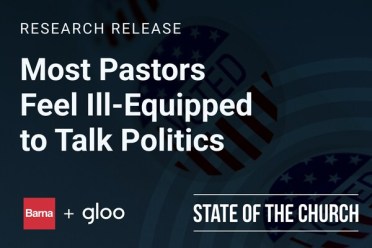How often have you heard about church disputes, and thought, This could have been our church?
Or you thought, This will never happen to our church?
Most pastors and church leaders never anticipate such a situation—until it happens.
After more than 45 years of helping churches find solutions to complicated problems, here are a few things I’ve learned:
They can be financial in nature
They can involve a moral failure of some sort
Church disputes can involve an internal power struggle
Church disputes can be rooted in how church property is used
It is wise to have an internal dispute resolution process
Mediation and arbitration are vastly different processes
Selecting the right mediator or arbitrator is crucial
Arbitration is not always an option
Arbitration is not always a requirement
Before seeking options for resolving church disputes, it may be helpful to first identify some of the common types.
These include:
Financial disputes
Churches receive tithes and offerings. These mostly end up in the general fund and are used for church expenses. As long as the funds advance the religious purposes of the church, the expenditures are likely permissible.
However, if funds are used in a way that does not clearly advance the religious purposes, a dispute may arise.
Churches also raise funds for a specific purpose. Restricted gifts (also known as designated gifts) support initiatives like a building fund. They may also finance a special program such as assisting the poor and needy or buying new choir robes.
Unless there is some qualifying language (such as retaining ultimate control over the use of the funds even if contrary to the donor’s stated preferences, or allowing a percentage of the funds to be used for administrative costs), the funds raised for this purpose are to be used only for the same purpose. When they are not, conflicts may again arise.
Similarly, a person occasionally may make a separate donation apart from the regular offerings and include specified restrictions. These restrictions will have to be set forth in writing to be effective. For example, a donation to finance a new building might come with a naming restriction. Again, a church’s decision to use the donation contrary to the donor’s restriction will likely trigger a dispute.
Claims of moral failures
This type of dispute has become increasingly common, especially in the areas of child abuse or sexual misconduct.
In addition to a claim against the alleged abuser, the church may find itself sued on the basis that it did not exercise appropriate oversight or, when the matter was brought to its attention, the church failed to act.
The alleged abuser might be an employee, a volunteer, or someone in a position of authority within the church, whether a senior leader or a lay leader.
Disputes over who controls the church
When there is a functioning corporate structure, this question is less likely to be raised.
However, independent churches founded by individual pastors are susceptible to control-related disputes, even when there is a functioning corporate structure. That is because, quite often, the pastor has exercised full oversight of the church to include making (or approving) all major decisions, and dies without a clear succession plan in place. When this happens, the pastor’s family often takes over and, on occasion, uses the assets for their own benefit.
But even when the family does not abuse the church’s assets, the question of who controls the church often ends up in court.
Using church property contrary to religious doctrine
Along with the issue of church control is the issue of ensuring the purpose of the church and its religious beliefs remain unchanged with any change of control.
Similarly, there are also numerous churches that have had to face disputes arising out of changing social mores within their congregation. Even well-established hierarchical churches have found themselves in the middle of disputes involving such matters as the ordination of women, gay rights, and use of gender-specific bathrooms, that have sometimes resulted in church splits.
Developing a dispute resolution process
There are several reasons to develop a method to resolve disputes before going to court. Lawsuits are both time-consuming and expensive. But even beyond this, it is important to remember courts are not allowed to make decisions based on a church’s religious beliefs. Instead, courts can only resolve church disputes based on outside objective facts, without interpreting doctrine or polity.
Upgrade to an Advantage Membership today and start enjoying 20% off all Church Law & Tax Store purchases, among other perks and privileges.
For example, what do your articles and bylaws say? Do you have a hierarchy that can override the decision of the local church? If the matter is left up to the directors, then what happens when the dispute is with those directors? And even if you have set out a method of resolving church disputes, how can you assure that the individual involved in the dispute is bound by that method?
If the conflict impacts the life and vitality of the church, and a church wishes to avoid the civil courts, it is recommended that there be a method of resolving the dispute in a manner that allows religious beliefs and doctrine to be considered.
Civil courts defer to church-mandated dispute resolution
As civil courts will defer to a church-mandated dispute resolution procedure, every church should consider to whom they are willing to submit a dispute for a decision.
This varies by church; there is no “one-size-fits-all” language that can be adopted. As part of this, the church will also want to consider how the approved method of resolution will allow both sides to feel that their concerns have been heard, regardless of whether the final resolution is to their liking.
Many churches start with the position that any dispute will be settled by the church authorities, which may include the pastor, the elders, the directors, or, for hierarchical churches, the higher church authorities.
But what if the dispute involves those authorities?
In that case, a court is likely to find there to be too much of a conflict of interest and will allow a court action to proceed in lieu of following the church arbitration provisions.
One should not confuse “mediation” with “arbitration.”
Although there are similarities, there is one huge difference: mediation is not binding unless both parties arrive at an agreement.
With mediation, the mediator works to bring both parties together. It is likely that neither party will get everything it wants; however, since both parties must agree to the terms of the settlement, each party is likely to be somewhat satisfied. Unless and until the parties agree, the mediation ends with the dispute still pending.
Arbitration, on the other hand, allows the outside third party to hear both sides of the dispute, and then make a decision.
The arbitrator will often try to encourage the parties to settle; however, if no settlement is reached, then the arbitrator’s decision will be binding. Depending on how the arbitration provision is drafted, this can either be a permanent decision, or it can be appealed to the court. Obviously, since the intention of this process is to avoid court if possible, making the decision of the arbitrator binding is often preferable.
How arbitration works
The parties may always agree to mediate a matter, since it is simply a more formal attempt to settle with an independent mediator. It can—but need not be—a first step before arbitration. However, for arbitration, there must be rules as to when a matter is to be submitted to arbitration. There must be rules as to when arbitration must be used, and about who is required to submit to it. There must also be rules about how the arbitrators are to be selected, and how the arbitration shall proceed.
The church should include in its bylaws the process selected for arbitration.
There are some professional associations, including the American Arbitration Association and the Judicial Arbitration and Mediation Services, Inc. (JAMS), which offer mediation, arbitration, and alternative dispute resolution (ADR) services. If your church selects one of these organizations, the organizations have their own rules and processes to follow, and it is not necessary to spell out the process so completely in your church’s bylaws.
If your church decides to set up its own method of arbitration, it can also designate the people or organizations from whom the arbitrator(s) will be selected.
Choosing the right mediator or arbitrator
In addition to setting out the process, the professional associations have their own mediators and arbitrators from which to choose.
Many of the JAMS mediators and arbitrators are retired judges. However, the problem with professional mediation/arbitration associations is that their arbitrators only have experience settling non-church matters.
Should you find someone that has worked with churches, they probably lack experience working with your church or your religious beliefs. This may not be an issue with mediation, but an impartial arbitrator might need to be educated on the matter. This is because they may not understand how religious beliefs and doctrine come into play.
There are some professional mediators and arbitrators who have experience in settling church matters. But, they may be harder to locate.
If your church is a hierarchical church, it may already have a dispute resolution process. Even if it does not, you have an existing church community from which you may be able to select arbitrators who are already familiar with your beliefs and doctrines. If you are a congregational church that is part of a recognized convention of churches (e.g. a Baptist church), or if there are other similar churches with which you associate, you may consider requiring that the arbitrators be selected from such related church entities.
However, as noted above, the arbitrator(s) selected cannot be interested in the dispute without running the risk that a court will later find that the arbitration was unfair.
Who decides?
With mediation, there should be agreement between the parties on the mediator to be used.
With arbitration, both parties may agree on an arbitrator.
However, if your church is not going to use a professional association, the most common method of selecting the arbitrator is for each party to select an arbitrator and to have those two arbitrators select a third.
Then, either all three arbitrators can participate, or the third arbitrator selected can run the arbitration. This depends on your church’s process.
As noted above, the church can limit the groups from whom the arbitrator(s) are to be selected. This is fine as long as there is no resulting conflict of interest.
Who must submit to arbitration?
No one can be required to participate in binding arbitration without having agreed to the process in advance.
For example, an employment agreement may require binding arbitration over a dispute between the church and a nonministerial employee.
But how does a church bind its congregants?
If the individuals become members, they will normally agree, as members, to follow the doctrines and beliefs of the church. The would also agree to abide by the rules and regulations thereof.
However, for there to be such an agreement, these individuals need to know what these rules are upfront. Therefore, if arbitration is to be required in certain circumstances, they must be spelled out (e.g., any matters concerning finances of the church). The required method of arbitration must also be described.
The harder situation is when the church has a congregation, but no members who have formally joined the church. In that situation, arbitration can be recommended, and the congregant can agree to be bound by the arbitration process. However, the congregant cannot be forced to do so. If they do not agree, then the court is more likely to entertain a lawsuit.
Lisa A. Runquist has more than 40 years of experience as a transactional lawyer, both with nonprofit organizations and business organizations.




















